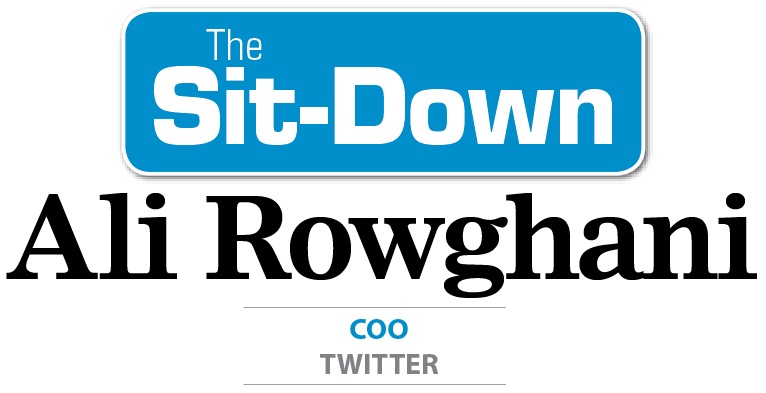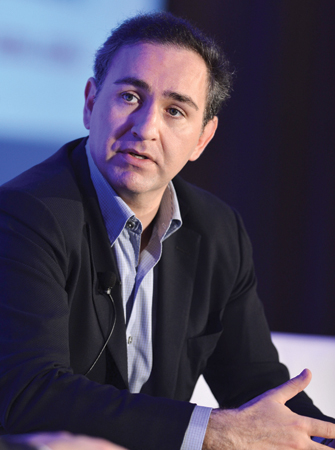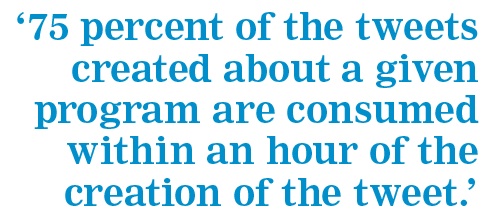
W e have an engineering culture, and it tends to sort of start late in the day and go late into the night. Engineers tend to arrive, like, after 10 and they tend to leave after 8.
But on [the day of the IPO] and only this day, we had basically the entire employee base, well north of a thousand people in San Francisco, all show up to work at 6 in the morning. There was a huge traffic jam leading into the parking lots around our office in downtown San Francisco.
We’re viewing the occasion of becoming a public company as not the end, rather as a means to an end. It’s an ability to raise capital at a scale that allows us to continue to invest in innovation and growth, and to make the product better and better for our users around the world.
 |
Photo by: MARC BRYAN-BROWN
|
This is a milestone that signifies, for a company like ours that’s been a private company for so long,
there’s no longer any place to hide. All of the metrics and all of the things you try, like whether they work or don’t work, they’re all pretty much now in public view.
We really hope that the pressure and visibility of being a public company will make us better and will hold us more accountable, will lead us to think bigger and really try to maximize the value of the company for our users and thereby for the investors.
You think about the process of meeting with investors as a process where they’re sort of interviewing you, but the truth is, you’re also interviewing them, to try to figure out “Who are the investors?” Do they understand the long-term value of the business?
An advertiser would prefer to put their advertising against an audience that’s more engaged. … Sports overindexes for the engagement of the audience.
Sports programming … is going to be viewed as an even more valuable place to put television advertising, particularly if content owners like the NFL can make the case clearly that they have huge amounts or disproportionate amounts of engagement on social platforms like ours.
We have a metric in the marketplace that Nielsen has developed called the Nielsen Twitter TV Rating, and it’s designed precisely to allow broadcasters and advertisers to value the engagement that television programming drives. And when the NFL sort of put those dots together, they realized, “Wow, this really makes a lot of sense for us, and the more we can drive conversation on Twitter, the more valuable it’s going to be for us.”
[Amplify] allows rights owners to publish short-form video directly into Twitter, and have that video appear in-line in user streams and more and more be played with a one-click play. The content owner gets compensated for the advertising that gets sold … then the advertiser pays Twitter for reach and targeting. … So a brand like the NFL might have 5 million followers on Twitter, but a sponsor allows them to target a much bigger audience, and that’s why we call it Amplify.
One thing that’s fascinating about [Nielsen’s] work is it shows that the reach of tweets on Twitter is live, meaning something like 75 percent of the tweets created about a given program are consumed within an hour of the creation of the tweet.
We have the 140-character constraint, which means that content
can be created and consumed on our platform faster than it can on any other platform. We display content in a time-filtered way.
Why that’s so important for television is that is the heart of why we drive tune-in, because you hear about what’s on TV while it’s still on. And we’ve recently announced a partnership with Comcast where you’ll actually be able to tune your television from a tweet.
If we can be a driver of consumption — driver of consumption of great content that people are interested in — and create a perpetual connection between that content and the audience, then we’ve succeeded.
Imagine if, like, 10 years ago, I’d said, “Hey, guess what, there’s going to be this service, it’s going to be creating this data in real time that’s going to tell you at any moment in time what the world is thinking.”
As a space matures and gets more competitive, you really have to focus on what differentiates you as a service, and why is that differentiation valuable. … We are today the only platform at scale that’s the combination of being live, public, conversational and widely distributed.
Think of Twitter as a tool… to accomplish the goals that you have. That goal could be … to create a persistent connection, to create a sense of engagement, to draw their attention to things that you want the audience to be focused on.
View it as an asset. View it as something that you can control, optimize and grow and get value from, whether that value is more tune in, whether that value is a better case to your advertisers why your programming is unique and deserves to be valued as such, whether that values the engagement from the audience.






